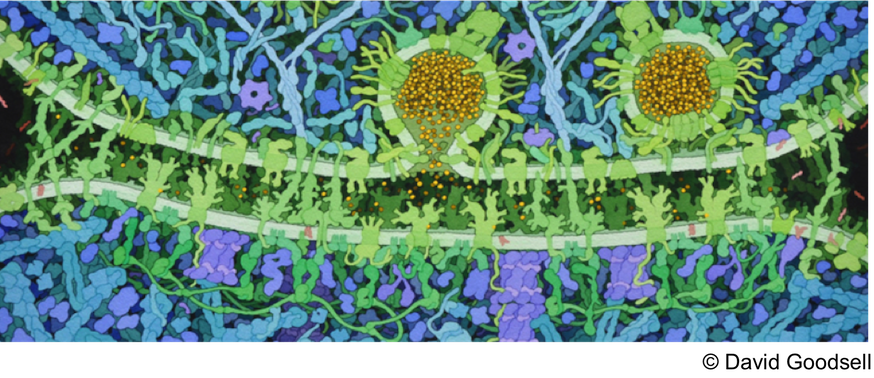Protein-Protein Interactions (PPI) are at the heart of processes and their understanding is of utmost importance to facilitate drug design and characterise the underlying mechanisms of certain diseases.
In this context, our team works on the Help Cure Muscular Dystrophy (HCMD) project, whose aim is to uncover new pathways responsible for the muscular dystrophy by developing a discriminating power over the interacting and non interacting complexes. A complete cross-docking (CCD) has then been realised over 2200 proteins with the help of the World Community Grid (WCG), generating more than 900 billions conformations over 2.5 millions different complexes.
In parallel of these computations, our team developed a new method, JET², to predict interacting surfaces at large scale (Laine and Carbone, 2015), using different criteria based on residue conservation, physico-chemical properties and the geometrical aspect of the protein structure. JET² has been run over more than 20.000 different chains for which a PDB structure is available.
We present new ways to link the two different problems of the prediction of protein interaction sites and the discrimination of interacting partners through optimisation of JET² prediction as well as using different scoring methods. Our work also sheds some light on interaction of proteins with multiple partners, which will be a principal factor in the analysis of the HCMD results.

|
|
|
|
Large scale analysis of protein interactions
1 : Biologie Computationnelle et Quantitative = Laboratory of Computational and Quantitative Biology
(LCQB)
-
Site web
Centre National de la Recherche Scientifique : UMR7238
Biologie Computationnelle et Quantitative UMR 7238 CNRS-Université Pierre et Marie Curie 4 place Jussieu, 75005 Paris, France -
France
2 : Laboratoire de Biologie Computationnelle et Quantitative
Université Pierre et Marie Curie (UPMC) - Paris VI
3 : Laboratoire de Biologie Computationnelle et Quantitative
(LCQB)
-
Site web
Sorbonne Universités, Université Pierre et Marie Curie (UPMC) - Paris VI, CNRS : UMR7238, IBPS
4 Place Jussieu, 75005 Paris -
France
4 : Institut Universitaire de France
(IUF)
-
Site web
* : Auteur correspondant
Ministère de l'Enseignement Supérieur et de la Recherche Scientifique
Maison des Universités, 103 Boulevard Saint-Michel, 75005 Paris -
France
|
 PDF version
PDF version
